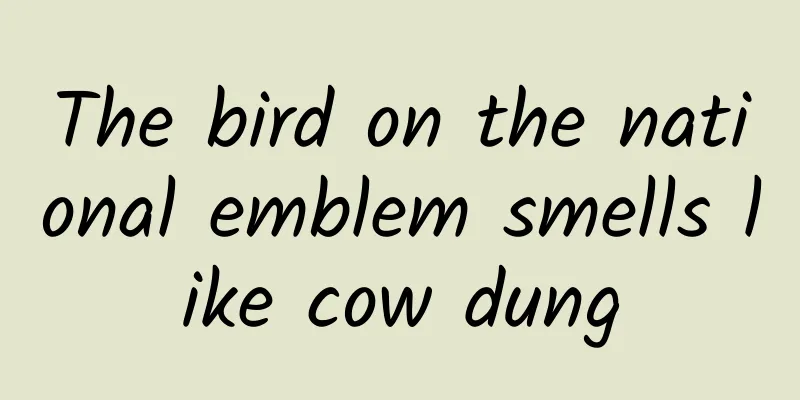The bird on the national emblem smells like cow dung

|
The national emblem of the Cooperative Republic of Guyana looks like this👇 The elements are very rich, in addition to the hoatzin there are also jaguars, Victoria amazonica, rice and sugarcane|Wikimedia Commons Having said that, the Hoat Pheasant (Opisthocomus hoazin) is a rather contradictory animal, and the contradiction lies in its "bird design". Hoatzin is a flying bird that eats leaves . Birds flutter around in trees all day long, but very few birds eat leaves for a living - because leaves are food with very low nutritional value and contain a lot of cellulose and plant toxins ; and the flying ability and small size of birds not only require a lot of energy, but also make it difficult for them to have a large digestive system that is sufficient to digest plants. So, how did the Hoatzin become a special case in this contradiction? Although it may look strange, the Hoatzin is surprisingly pretty to look at | Murray Foubister / Wikimedia Commons The weirdest bird Hoatzin live in the woods of South American wetlands. They have non-mainstream blue eye makeup and afro hair. They have poor flying ability and their flight distance is rarely more than 100 meters. They usually use their large claws to crawl between trees and feed on leaves and buds. The nest of the hoatzin is made of loose branches, which has almost no defense. Fortunately, its chicks are very hardworking. When encountering predators, the chicks immediately climb out of the nest and jump into the water. The hoatzin likes to build a nest on a long branch that stretches above the water. It looks shaky, but it actually reserves a way to escape. The young hoatzin is an excellent swimmer and can dive a considerable distance to confuse predators. However, after the hoatzin becomes an adult, it rarely goes into the water. Sketch showing a hoatzin chick using its claws to climb | Internet Archive Book Images / Flickr The strangest thing is that the chicks of the Hoatzin have two hard claws on their wings , which are used to climb trees and fall off after the flight feathers grow out. This reminds us of the old predecessor Archaeopteryx. Eating grass is not easy Herbivores have a highly complex digestive system, the most special part of which is the fermentation cavity . This is a huge container that holds a large number of microorganisms that can decompose cellulose and hemicellulose into absorbable nutrients and reduce the toxicity of toxins. Because vertebrates do not have enzymes to digest cellulose, the role of the fermentation cavity is crucial. In mammals, some animals have evolved a part of the back of the intestines as a fermentation chamber, called hindgut fermenters , such as horses use their colon as a fermentation chamber; some animals use the part before the intestines as a fermentation chamber, called foregut fermenters . The most famous foregut fermenters are ruminants (cattle, sheep, deer, camels, etc.), whose stomachs are divided into multiple chambers. The first "chamber" (rumen) becomes the fermentation chamber, which is very large. The volume of a cow's rumen is up to 100 liters. Sheep stomach, with the largest part being the rumen | Uwe Gille / Wikimedia Commons Plant-eating birds, such as pheasants and geese, also have a fermentation chamber, but they are almost all hindgut fermenters, using the cecum (birds have two) as a fermentation chamber. The hoatzin is unique in that it is a foregut fermenter and has a " rumen " similar to that of ruminants. However, to explain the "rumen" of the hoatzin, we must first talk about the bird's digestive system. A cow's stomach If you have eaten chicken giblets, you may have discovered that the chicken’s digestive tract has three “chambers” before the intestines: The crop , which evolved from part of the esophagus, is a pocket for storing food; The stomach , which is similar to ours, has glands that secrete digestive juices and is responsible for digesting food; The gizzard , also called chicken gizzard, is located behind the stomach. It has a large amount of muscle on the outside and a keratinous crust on the inside. It grinds and crushes hard food through muscle contraction. The digestive system of a chicken, with the three pouches at the front being the crop, proventriculus and gizzard | ErikBeyersdorf / Wikimedia Commons Not all birds have these three parts. Some birds don't have a crop, and some don't have a gizzard. The uniqueness of the hoatzin lies in the crop and the esophagus below. Its crop is very large and divided into two chambers; the esophagus below is also very thick and divided into irregular small chambers, which look bumpy - these parts are the fermentation chamber of the hoatzin. The fermentation chamber of the hoatzin is the largest among birds relative to its body size, and the contents inside account for 77% of the entire digestive tract contents. The digestive system of a Hoatzin, note the large crop and enlarged lower esophagus | Filipa Godoy-Vitorino et al. / Applied and Environmental Microbiology (2008) The fermentation chamber is a zoo, with a rich variety of bacteria , archaea (organisms that look like bacteria but are actually very different from bacteria), protists , and fungi . One study found that the bacteria in the crop of the hoatzin alone included nine phyla , most of which were undescribed species. Like the rumen of a cow, the acidity of the fermentation chamber of the musk pheasant is close to neutral, not as strong as the human stomach, which is suitable for the life of "small pets". The gas produced by the microorganisms decomposing the leaves makes the musk pheasant emit a stench like fresh cow dung , so the indigenous people will never eat it unless they are starving to death. Animals that rely on microorganisms to decompose plants rely heavily on the ability to crush them —the finer the plant particles, the easier it is to break them down. Ruminants spit out food from their rumens for a second chewing, but birds don’t have teeth, so the muntjac’s digestive system must double as a crusher. The muntjac’s fermentation chamber has strong muscles on the outside, a keratinous crust on the inside, and raised ridges. It works on the same principle as a chicken’s gizzard: the muscles provide power, and the hard, uneven inner wall grinds the leaves like mustard. In addition, the hoatzin also has a gizzard with grinding function , but it is not as powerful as the fermentation chamber. Hoatzin have large wings but are poor fliers | AISSE GAERTNER / Wikimedia Commons In order to make room for the fermentation chamber, the sternum and pectoral muscles (the "engine" of flying birds) of the hoat pheasant have shrunk, so their flying ability is very weak . However, they don't need to "fly into the sky" to find anything, because food is everywhere. The hoat pheasant only needs to hide silently in the dense branches and leaves and live a tasteful Buddhist life. Author: Red Queen This article comes from the Species Calendar, welcome to forward If you need to reprint, please contact [email protected] |
Recommend
Doing activities without a goal is no different from being a salted fish!
For products, activities are an effective way to ...
These 24 practical widgets will turn your iPhone into an efficient tool in seconds
In fact, since iOS 8, Apple has integrated widget...
Can we eat the green onion?
Every summer, it is the season for eating mushroo...
Apple ignites NFC war, UnionPay and Alipay battle changes
NFC payment, which has been stagnant in promotion...
Will an asteroid hit the Earth in 2032? The United Nations launches the Planetary Safety Protocol for the first time
According to a report on the website of El Spania...
Tik Tok live broadcast from 0 to 1 script template
Five basic steps for sales 1. Raise questions: Ra...
Two dimensions teach you how to spread high-quality content?
In an era where content is king, the value of hig...
International Day of Persons with Disabilities | We may be different, but we can all…
Producer: Chen Kaixing, Zou Shengwen Producer: Yu...
Using data from 41 solar occultations, the mystery of Saturn's rings was finally discovered?
Sun reveals secrets of Saturn's rings Saturn&...
Being too clean can also make you sick! Get rid of these 6 "good habits" as soon as possible
“Doctor, I love cleanliness so much, how come I s...
Marketing Promotion: How was the Forbidden City’s super IP created?
As a cultural symbol with a history of nearly 600...
[Grain Policy of a Great Country] Turning saline-alkali land into a granary: A picture to understand the "Chinese Policy" of reducing salt and treating alkali
[Grain Policy of a Great Country] How can saline-...
Quick Start on Precision Marketing for E-Commerce
Whether it is traditional offline business or onl...
Zhou Fan | Turning Life 365 to Build a New Self Online Course 24 Video Lessons
Zhou Fan | Turning Life 365 to Build a New Self O...









